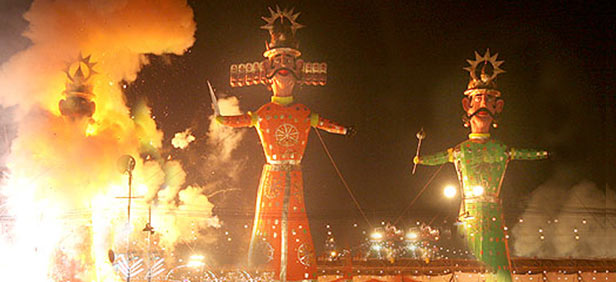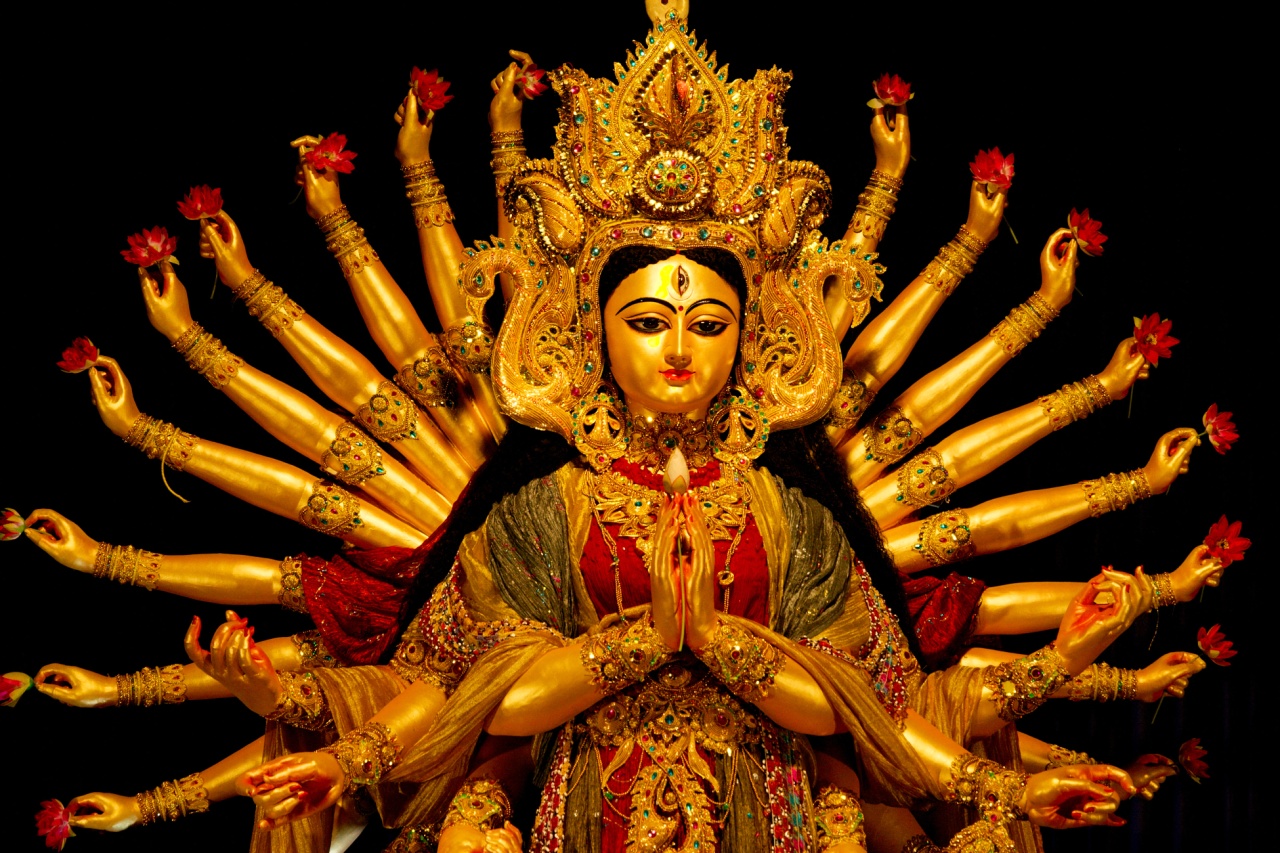Dussehra
Dussehra is an India wide Hindu festival that celebrates the victory of the good over the bad, in remembrance of Rama’s victory over Ravana, from the Hindu text The Ramayana. The Ramayana, which originated in the second century BC, tells the story of Rama (incarnation of the god Vishnu) who defeats the demon king Ravana after a lot of wanderings and heroic deeds, and the rescue of his wife Sita. Rama was supported during this battle by a monkey army that was led by the monkey king Hanuman.
This festival falls on the tenth Day of Navratara in September or October. The festival is celebrated with zest and festivities as it also marks the beginning of the winter season after the long, unbearable, hot summer. In north India, gigantic effigies of the ten-headed Ravana and his brothers are set aflame amidst bursting of firecrackers. Fairs are usually held on this occasion with lots to eat, buy and enjoy.
BASTAR
A sleepy town in Chattisgarh is where you will find Dussehra celebrations that are truly unlike those anywhere else in India. There is a dash of local custom added into the mythology of the festival in the Bastar community. The chief of the tribe is symbolically abducted by the Murias, and taken to the Muria village Kunharbokra. In the evening the king is taken back on a chariot by the armed men of the tribe. The chariot for this purpose is specially constructed by the Saoras. The nails used are made by blacksmiths and the responsibility of making the ropes is given to the Parja tribe.
Each tribal community has their own version of this festival. The Bastar community celebrate by offering a nine year old girl, who is a weaver’s daughter, to be married to the priest of the temple of the shrine. She is then sent into a trance and asked to grant safe conduct for the celebrations. On the19th day of Navratra, the Dussehra Rath (chariot) is pulled by the Maria and Dhruva tribals. A puja is held where 9 girls are worshipped, and Brahmins are fed and clothed. The religious, cultural and tribal influence on this Hindu festival is extremely evident in their rituals and customs.
KOTA
The Dussehra festival in Kota is still pure, authentic, and very spectacular. 75 feet tall effigies of the demons Ravana, Kumbhakarana and Meghnath are burnt here on Dussehra day. Villagers dress themselves in colourful clothes and offer prayers to Lord Rama. There is a dazzling procession enjoyed by locals from the surrounding villages – all these visitors provide a ripe opportunity for the traders to display their wares.
MYSORE
Experience the 400-year-old Dussehra festivities in Mysore in royal style. The festival is locally known as Dasara in the city. Mysore springs into activity over the celebration for ten days. The illumination of Mysore Palace with as many as 100,000 lights on the occasion of Dussehra is a beautiful treat that no other city offers. Moreover, catching the procession of richly embellished elephants on the decorated streets of Mysore is an experience of the city’s royalty and ethnic culture. The celebration in this princely city is a roller-coaster ride of gastronomic joy too, so eat to your heart’s (or stomach’s) delight.
KULLU
Kullu, in Himachal Pradesh, is renowned for its unique Dussehra celebrations. Idols of gods and goddesses from nearby villages are carried on the heads of worshippers and brought to the fair ground where they meet their main deity, Lord Raghunath. For seven days, the valley wears a festive look. On the last day, the procession is taken to the Beas River where a pile of wood and grass is set afire; symbolizing the burning of Ravana’s Lanka. Enjoy the cool, clear mountain air as you visit the fair and take in the festivities, especially the chariot procession led by the King of Kullu.
KOLKATA
Dussehra is known as ‘Durga Puja’ in Bengal and Kolkata is the city where you will find the oldest traditional Durga Puja celebrations in households, and almost every nook and corner. Kolkata transforms into a beautifully noisy and colourful place with people dressed in traditional clothes, music and culture at every turn. The festivities date back to the 16th Century Mughal rule and have become a huge social event. It is probably one of the biggest community based festivals that is celebrated in India. Some of the Durga Puja celebrations in Kolkata are nearly 200-250 years old.
Cultural shows and events like magic shows, “Kirtan”, “Kobi Gaan”, “Jatra” and puppet shows are all unique to Durga Puja festivities in the city. Bengali sweets like Rosgolla, Sandesh, shopping for goodies and bonhomie with family and friends make Dussehra celebrations in Kolkata truly memorable.
Wherever you celebrate Dussehra in India, you can be sure you’ll experience, sounds, colours, lights, and tastes that will live in your memory for a long time.






